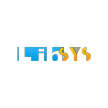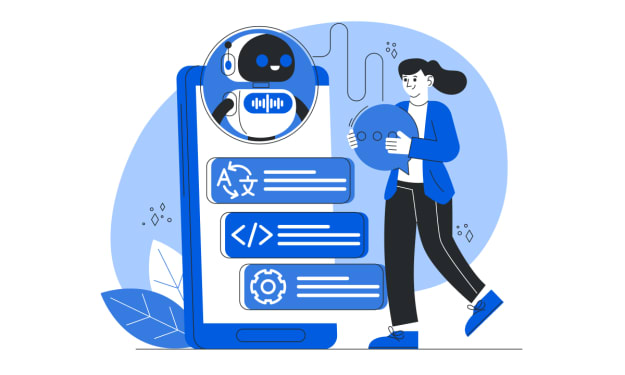The next big thing in Library automation in India
Library Automation Software

Library services require a variety of works such as the acquisition, cataloging, circulation, stock verification, and arrangement of various kinds of documents in several formats. A conventional library system which is managed manually is time-consuming in which labor-intensive activities and daily clerical tasks are executed slowly and expensively by library staff. Libraries around the world have been trying to automate such tasks to reduce human errors and maximize the productivity and creativity of library staff.
Now we have just entered into a new technological era. Library automation refers to the use of applications of Information Communications and Technologies for executing manual operations of libraries of any size or type.
History and Evolution
The efforts for the library automation software began in the 1930s by Herman Hollerith of the US Census Bureau who developed card-punched technology, with the help of Dr. Jolul Shaw Buildings. In 1935, a Circulation control system was designed by Dr. Ralph H. Parker at the University of Texas at Austin using Hollerith Punched Card or IBM punched card equipment. However, the efforts were placed into the experimental library automation system project due to slow progress in computer systems development. In the 1960s, a first trend for the automation of libraries in the United States was established using computers for creating bibliographic databases as library catalogues. Library of Congress had created a machine-readable catalogue of its holdings records using the MARC input format. OCLC (Online Computer Library Center) the first computer-based library was introduced in 1967.
The 1970s contributed to an acceleration in library automation by introducing computer chip and storage devices. Online library networks were introduced by RLIN (Research Libraries Knowledge Network) and WLN (Washington Library Network). In this decade, several libraries had begun automation using the microcomputers of their organizations.
In the 1980s automation became a potential idea for all forms and sizes of libraries as the rapid production of lower-cost microcomputers became easy to reach in libraries. The advent of CD-ROMs in late 1980 changed how libraries work, making the market more information accessible to CD-ROMs that contained databases, software, and information that was previously only available through print.
Computer networking enlarged in the 1990s. By connecting computers into a network, local and remote access can be provided and the different resources held on the networked computers can be shared. Libraries have also introduced the Internet and the World Wide Web on a larger-scale to provide their users with fast library and information services. In addition, automation packages unique to hardware and web interface packages have been introduced in the market.
In the new millennium, every library, small or huge, now automates its activities and services. The standard library catalogues are increasingly replaced by computerized catalogues or OPACs. With the advancement of technology, there will be new opportunities for libraries to deliver reliable, comprehensive information services and connect to computer networks worldwide. Barcode, digital library, and RFID protection systems are the most recent technologies used in library automation systems.
Challenges in Library automation
Lack of Proper Planning: Planning of library automation will require a proper feasibility analysis in order to ensure the success of the project and prevent wastage of time, resources, and energy. A broad variety of feasibility studies should be used to assess the adequacy of the software before implementing it in the library. For library automation, modern hardware and software are being used. It becomes imperative for institutions to assess if they have sufficient resources for library automation.
Proper planning for library automation must include the following points:
- Objective of library
- Library finance and budget
- System analysis
- Hardware requirement
- Software for library automation: commercial or open source software
- Services via automation
Apprehension that the technology could be too expensive: In general, any effective and successful automation requires sound financial support for hardware, software and other ICT devices. Often this leads to an apprehension among the academic institutes that the technology, both hardware and software would be expensive and may not be affordable. However, that is not true because hardware and software costs differ according to the level of automation.
Unskilled manpower: In the past, library education was focused on conventional librarianship, which led to a shortage of librarians who could plan, design, and implement various information projects. It is also true that the vast majority of the current generation of librarians still have insufficient computer skills. The automation exercise has suffered from many technological problems. In many cases, it was found that one or two professionals are saddled with the responsibility of managing the system unit thereby limiting the outcome of service delivery. Often, the library staff has to undergo extensive training. The in-house training for handling the software is normally administered by the supplier who provided the software. The training of library employees depends on the level of automation. The basic training helps employees to transfer the same data on a server/main machine in a network environment.
Present scenario
The current process is dominated by the electronic and digitization of the learning tools to communicate at a global level. During the last decade, numerous universities in India have automated some of its features and functions and are offering a different range of computer-based services. The current library scenario uses a variety of software packages for international and indigenous library automation in India. There are many library software packages available, including, Alice for Windows, Libsys, and Virtua. All these software packages are integrated with various modules. Initially, library automation in India was limited to print catalogs and accession registers. Then, libraries began substituting the print catalog with OPACs, with several libraries maintaining both print and OPAC because of problems of power and technology failure. The education industry has realized the importance of library automation. The reform in the education field has been taking place, and in present, it is observed that 23.53% of libraries are fully automated, whereas 47.06% are partially automated, and 29.41% are in the initial stage.
Upcoming (Discovery Services, ERMS)
As with any automation, the adoption of the Electronic Resource Management System (ERMS) becomes essential. As academic libraries moved from print to e-journals, they faced enormous challenges for efficient management. Today’s library collections are both print and electronic. In the time when collections consisted only of physical materials, an integrated library system (ILS) was designed to manage. The ILS usually often includes information about publications and acquisitions. The ILS’s inability to extend its functionality to support e-content significantly contributed to ERMS products being introduced as a new type of software. The ERMS products can operate independently and co-exist with any ILS. ERMS can also be well integrated with an ILS, mainly by increasing the acquisitions and serials modules with features related to e-content subscriptions. ERMS products are introduced in two primary flavors: locally installed software or software as a service (SaaS). For those who have adopted locally installed software, the hardware and software infrastructure needs to be developed and should count on the need for at least some technical involvement. A SaaS implementation requires the use of an instance of the software that runs on a server provided by the vendor and accessed by the library’s staff and patrons through a network.
The category of library services that provide combined capabilities in print and electronic resources has gained acceptance in a large number of academic libraries. A substantial number of academic libraries still operate conventional ILS and use other means to handle electronic resources. Many of these may be switching to the library services platform in later phases. Also, some academic libraries may choose to continue with their own ILS and use standalone ERM products.
Discovery services are now adopted by many academic libraries to work efficiently with e-library resources. Discovery services are pre-assembled indices covering a wide range of library electronic resources. It shows the entire text of all format types accessible by the library staff and patrons (journals, books, repositories, etc.) It has advanced search capabilities to limit, refine, and, sort. It has the option to search for specific content like only subscribed journals, or only online journals or your specific library collection, which is updated every time. It can save favorite searches, and for reference, search history can be viewed.
Libraries consider using discovery services when:
- The library has access to many e-resources.
- When resources have many and different access points
- When the library aims to integrate print and electronic resources through a single search function.
- Improved visibility of e-resources.
About the Creator
Arun Kumar
Digital Marketing Enthusiast






Comments
There are no comments for this story
Be the first to respond and start the conversation.